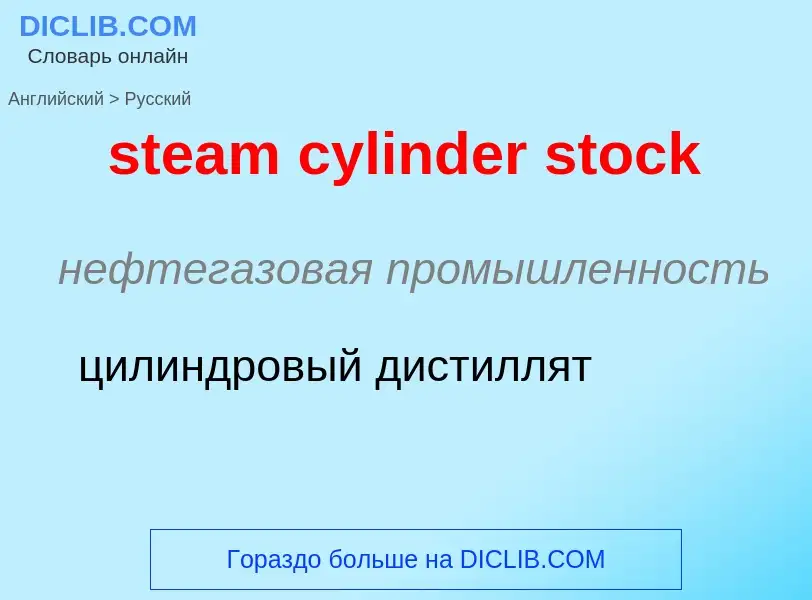Vertaling en analyse van woorden door kunstmatige intelligentie ChatGPT
Op deze pagina kunt u een gedetailleerde analyse krijgen van een woord of zin, geproduceerd met behulp van de beste kunstmatige intelligentietechnologie tot nu toe:
- hoe het woord wordt gebruikt
- gebruiksfrequentie
- het wordt vaker gebruikt in mondelinge of schriftelijke toespraken
- opties voor woordvertaling
- Gebruiksvoorbeelden (meerdere zinnen met vertaling)
- etymologie
steam cylinder stock - vertaling naar russisch
нефтегазовая промышленность
цилиндровый дистиллят
общая лексика
гильза цилиндра
нефтегазовая промышленность
гильза цилиндра промывочного насоса
Definitie
Wikipedia

The cylinder is the power-producing element of the steam engine powering a steam locomotive. The cylinder is made pressure-tight with end covers and a piston; a valve distributes the steam to the ends of the cylinder. Cylinders were initially cast iron, but later made of steel. The cylinder casting includes other features such as (in the case of Stephenson's Rocket) valve ports and mounting feet. The last big American locomotives incorporated the cylinders as part of huge one-piece steel castings that were the main frame of the locomotive. Renewable wearing surfaces were needed inside the cylinders and provided by cast-iron bushings.
The way the valve controlled the steam entering and leaving the cylinder was known as steam distribution and shown by the shape of the indicator diagram. What happened to the steam inside the cylinder was assessed separately from what happened in the boiler and how much friction the moving machinery had to cope with. This assessment was known as "engine performance" or "cylinder performance". The cylinder performance, together with the boiler and machinery performance, established the efficiency of the complete locomotive. The pressure of the steam in the cylinder was measured as the piston moved and the power moving the piston was calculated and known as cylinder power. The forces produced in the cylinder moved the train but were also damaging to the structure which held the cylinders in place. Bolted joints came loose, cylinder castings and frames cracked and reduced the availability of the locomotive.
Cylinders may be arranged in several different ways.

![60163 ''Tornado'']]. The black casting to the left houses the cylinder, in which slides the [[piston]]; the piston rod is immediately above the wheel. 60163 ''Tornado'']]. The black casting to the left houses the cylinder, in which slides the [[piston]]; the piston rod is immediately above the wheel.](https://commons.wikimedia.org/wiki/Special:FilePath/60163 Tornado cylinder rod.jpg?width=200)
![French [[2-2-2]] locomotive with nearly horizontal cylinders, 1844 French [[2-2-2]] locomotive with nearly horizontal cylinders, 1844](https://commons.wikimedia.org/wiki/Special:FilePath/Locomotive n° 0135 de la Cie de l'Ouest.jpg?width=200)
.jpg?width=200)
.png?width=200)
